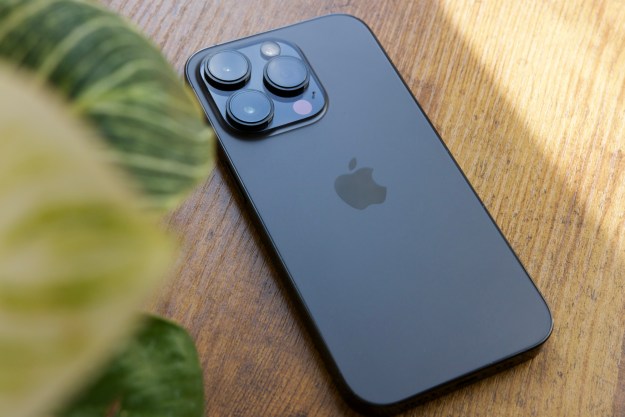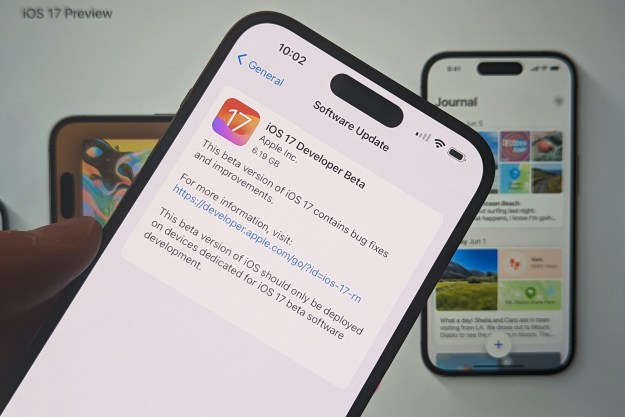Apple's iPhone 14 Pro and iPhone 14 Pro Max finally brought one small but long-awaited feature: the always-on display. While it's exclusive to the Pro models, Apple's always-on display was worth the wait, as it expands on the rather plain monochromatic versions we've seen on Android handsets over the years to go with a full-color presentation of your lock screen, wallpaper and all.
Still, as utterly gorgeous as the new always-on display is, there are some valid reasons why you may want to toggle it off. It may simply be distracting in some situations, or you may find your iPhone is taking a hit on its battery life from leaving it on all the time.
Shortly after the iPhone 14 lineup was released, a significant number of new owners found the always-on display was consuming far too much power. While this wasn't a problem for everyone, and the issues seem to be far less common today (those early reports may have resulted from a bug in iOS 16.0 that Apple has since addressed), it's still something worth keeping in mind if you find that your iPhone battery isn't getting you through the day.
Fortunately, Apple has made it pretty easy to turn off the always-on display, and it's added a few new tricks in iOS 16 point releases to give you even more control over when the display is on and what appears on it, so you don't need to ruin your iPhone 14 Pro experience by turning it off entirely
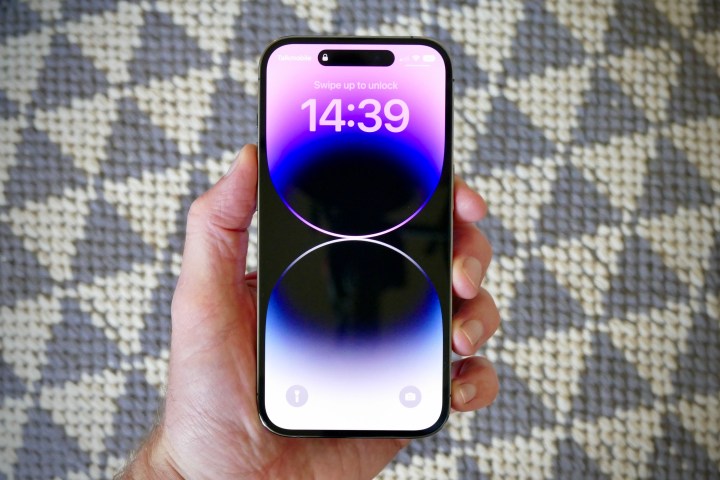
How to turn off always-on display on your iPhone 14 Pro
Regardless of which version you have, the iPhone 14 Pro or the iPhone 14 Pro Max, the steps for turning off the always-on display are the same. The always-on display will be turned on by default when you first set up your phone, so if you want to turn it off, you can do so as soon as you're able to unlock your device.
Step 1: Open the Settings app on your iPhone 14 Pro or iPhone 14 Pro Max.

Step 2: Scroll down and select Display & Brightness.
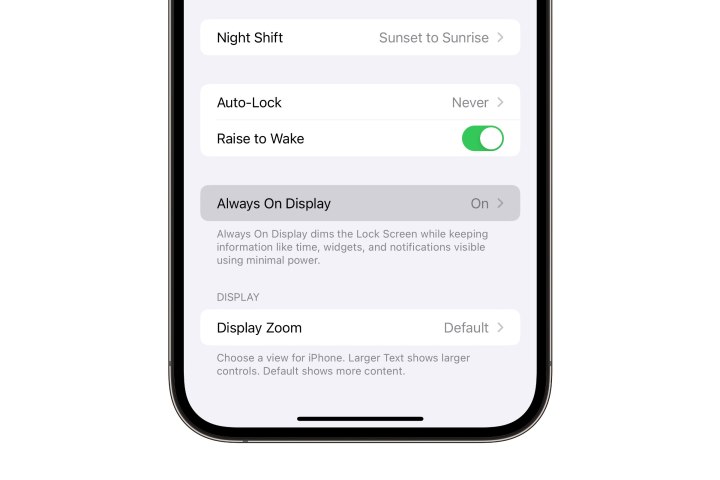
Step 3: Scroll to the bottom of the next page and choose Always On Display.
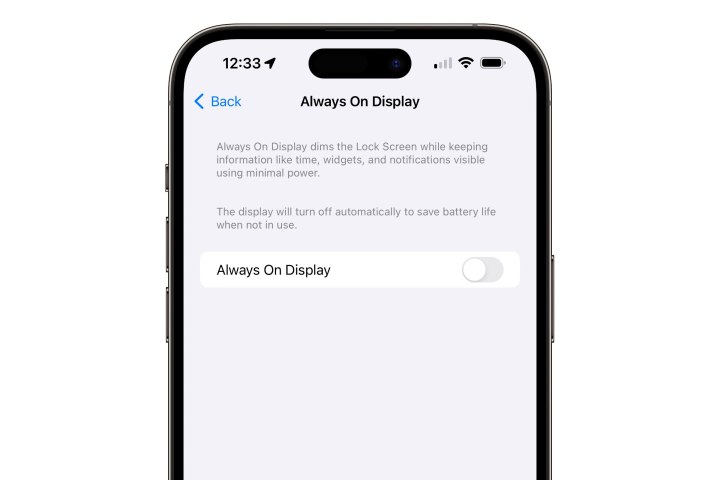
Step 4: Switch the toggle next to Always On Display so that it's off.
With that, your iPhone 14 Pro or iPhone 14 Pro Max will go dark when you lock the screen, just like any other iPhone model. If you want to reactivate the always-on display again, simply repeat the steps above and toggle it back on.
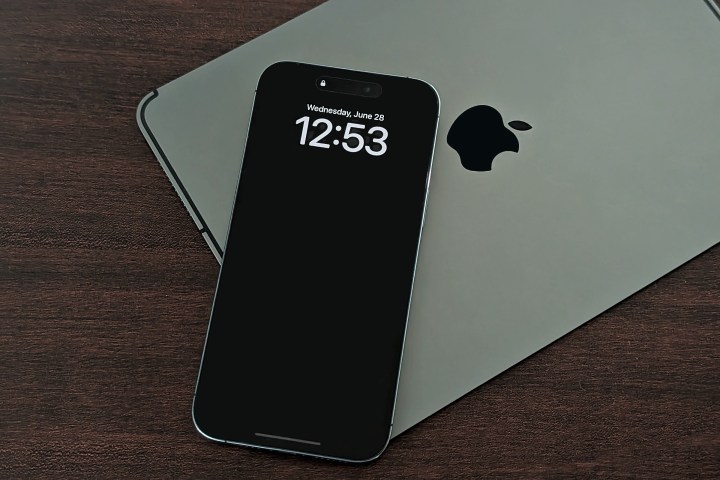
How to tone down the always-on display on your iPhone 14 Pro (iOS 16.2 or newer)
One of the best aspects of an always-on display on a smartphone is the ability to see the time at a glance without the need to wake up your phone by pressing a button or tapping the screen. However, some would argue that the iPhone's always-on display can be a little bit cluttered compared to those found on most other smartphones.
The good news is that if you prefer this more minimalist look, Apple added two new options in iOS 16.2 that let you tone things down by removing the wallpaper, disabling notifications, or both. This can also help you reduce any possible impact on battery life without turning the always-on display off entirely, although in our testing, we've found those savings to be negligible at best.
Step 1: Open the Settings app on your iPhone 14 Pro or iPhone 14 Pro Max.

Step 2: Scroll down and select Display & Brightness.

Step 3: Scroll to the bottom of the next page and choose Always On Display.
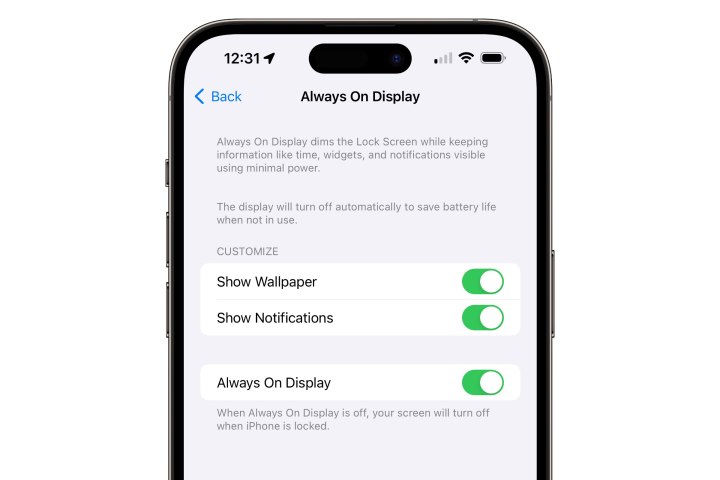
Step 4: Switch off Show Wallpaper or Show Notifications, as desired.
Disabling both of these options leaves you with nothing but the clock when your iPhone screen is locked and sleeping, giving you the most minimalist look possible. Leaving wallpaper enabled without notifications offers a similarly clean style that shows only the time and your chosen wallpaper, dimmed and tone-adjusted for the best appearance.
On the other hand, allowing notifications on your always-on display can clutter things up a bit depending on how many you typically get and how you use Focus modes. It will also show the current Focus mode at the bottom when one is enabled.
How to turn off the always-on display at specific times and places (iOS 16.4 or newer)
Speaking of Focus modes, Apple added a handy new feature in iOS 16.4 that lets you include your always-on display in the list of things that are affected when you switch to a different mode.
The always-on display has always been disabled when using the Sleep Focus, but now you can choose to switch it off in any Focus mode, such as during work or quiet times.
Since Focus modes can be set to turn on and off automatically based on time and location, you can also use this to control when and where your always-on display is used. It can also be used to enable the always-on display, so you can set it to stay off by default while having it active at certain times of the day or week or in specific places.
Step 1: Open the Settings app on your iPhone 14 Pro or iPhone 14 Pro Max.

Step 2: Select Focus.
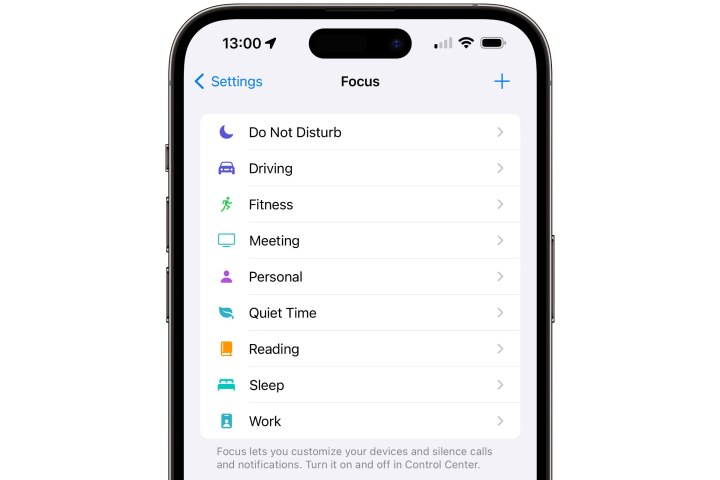
Step 3: Choose the Focus you'd like to modify. You can also select the + button in the top-right corner to create a new Focus, assuming you haven't reached the maximum number of 10 Focus modes.
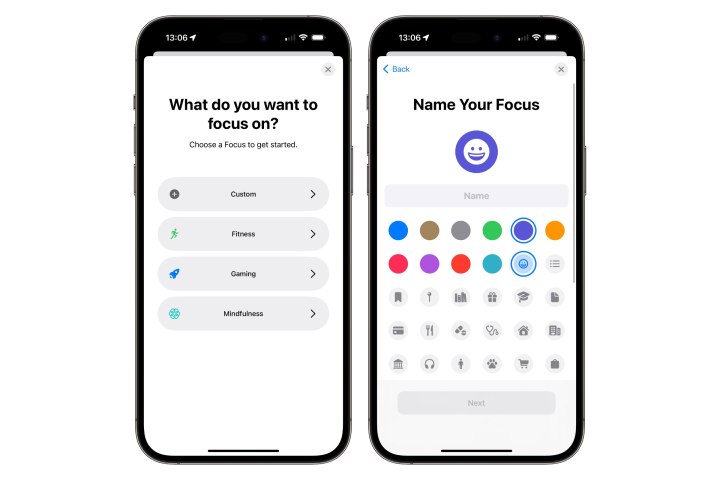
Step 4: If you've opted to create a new Focus, follow the steps to choose the predefined type of Focus you would like to create, such as Fitness, Gaming, or Mindfulness, or choose Custom to enter your own name, color, and icon for the Focus.
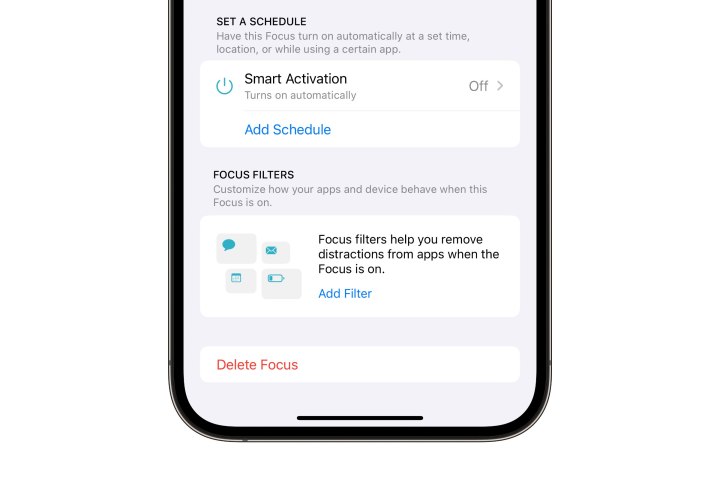
Step 5: On the Focus details screen, scroll to the bottom and select Add Filter.
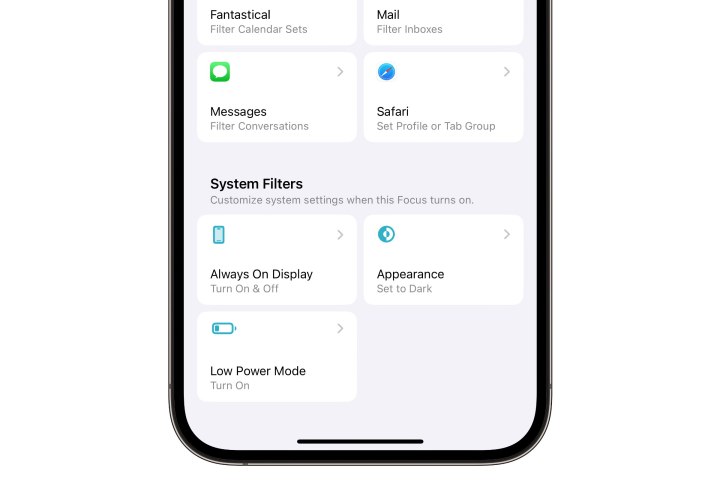
Step 6: At the bottom of the next screen, choose Always On Display.
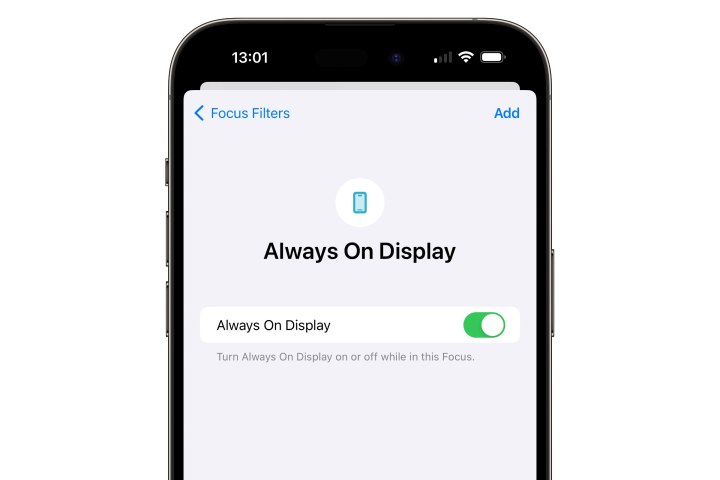
Step 7: Toggle the switch on the next screen on or off depending on how you want the always-on display to behave when this Focus is active.
Step 8: Select Add from the top-right corner to add the new setting to your Focus.
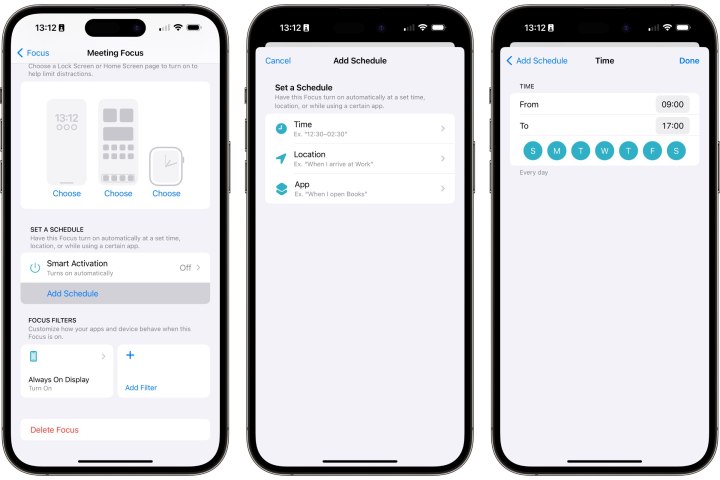
Step 9: Your chosen setting for the always-on display will take effect each time you activate the Focus manually. You can set the Focus to activate at a certain location or time by selecting Add Schedule, choosing Time or Location, and then filling in the appropriate details.
Editors' Recommendations
- Best Cricket phone deals: Get an iPhone 11 for free and more
- Another report suggests the iPhone 15 Pro will be pricier
- How to fast charge your iPhone
- Apple may face ‘severe’ iPhone 15 shortage over production issue, report says
- An iPhone just sold for a crazy amount at auction



